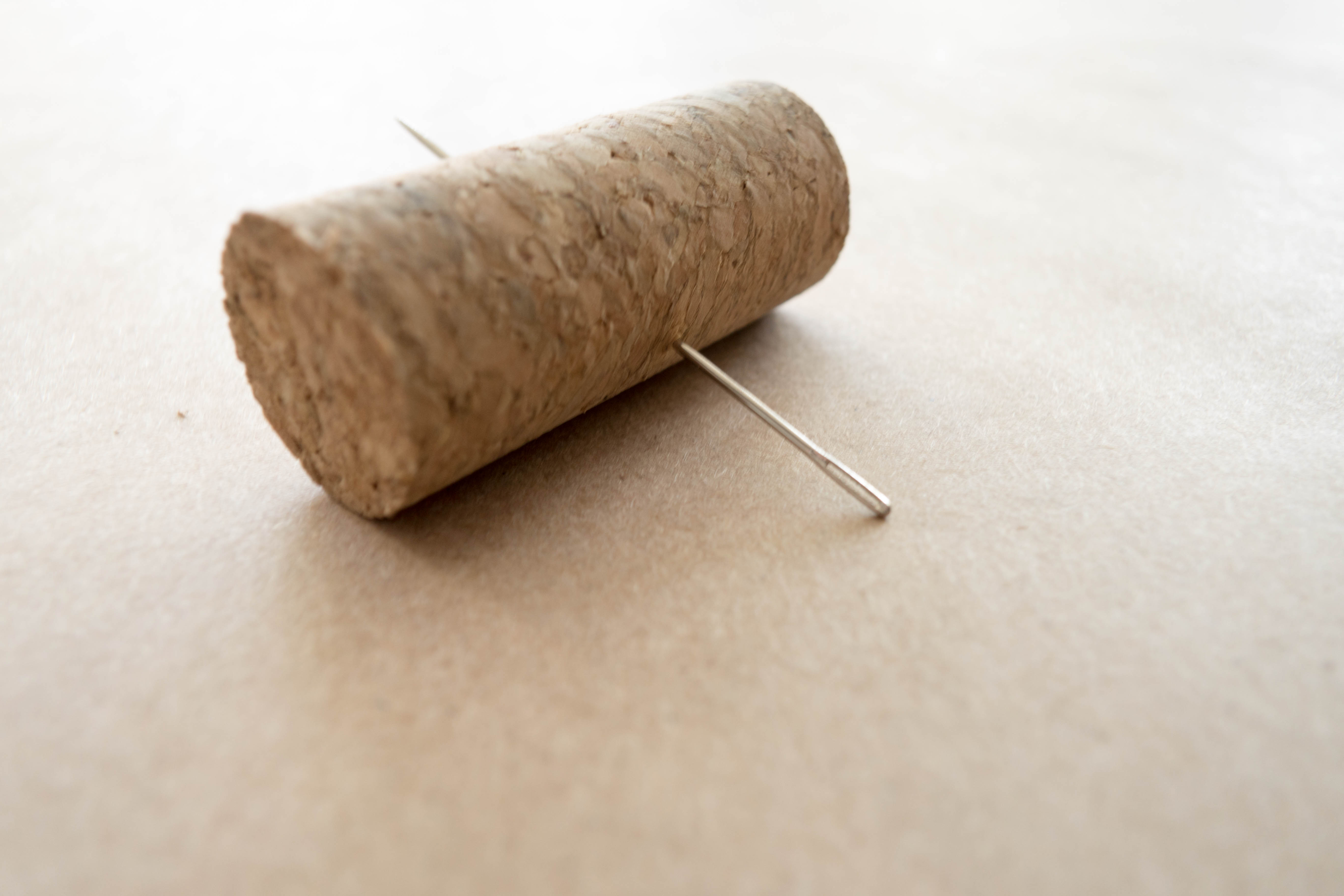Step-by-step tutorial
Step 1
Gather your materials.

Step 2
Poke a hole through the center of the cork with the needle.

Tip
Move the needle back and forth through the hole a few times. This will make step 4 much easier.
Step 3
Holding the needle in one hand, magnetize it by moving the magnet down the length of the needle (from the hole to the point) about 50 times.

Tip
Only move the magnet downward in one direction on the needle.
Step 4
Insert the needle into the hole in the cork.

Tip
Optional: To make it easier to identify which way NORTH is, draw a small arrow on the middle of the cork and make sure the pointy end of the needle gets inserted in the same direction of the arrow.
Step 5
Fill a bowl with water.

Step 6
Place the cork into the bowl of water and watch as the needle begins to rotate. It should stop when the point of the needle is facing north and the hole of the needle is facing south. Check the accuracy of it with a smartphone compass app or a real compass!

Learn more
All magnets have a north and south pole, with invisible lines of magnetic force between them. The lines of force are what cause opposite poles to snap together and similar poles to push each other away. The magnets on your refrigerator have a north and south pole. A compass has a north and south pole. Even the Earth has a north and south pole.
Yes, the Earth is a magnet too! The Earth’s magnetic field stretches all the way from the south pole to the north pole, with lines of force curving out into space. The Earth’s magnetic field is very helpful, because it protects us from harmful solar particles and radiation. It also lets us use compasses to navigate.
A compass works by lining up with the Earth’s magnetic field. The invisible lines of force make the north pole of the compass attracted to the Earth’s north. If a compass needle can rotate freely, it will always point toward the north.
You might be wondering about why the north pole of a compass points to the Earth’s north pole and not its south pole. Does that mean that same poles are attracting? Aren’t opposites supposed to attract? Well, it turns out that the Earth’s geographic north pole is actually its magnetic south pole!
This strange mix-up happened because magnetic poles were named after the poles of a compass, which were decided long before anyone knew much about magnets at all. The north-seeking compass pole was named “North” because it was the one that went toward geographic north. The south-seeking pole was named “South” because it went toward geographic south.
As people learned more about magnets, they stuck with using the names of the compass poles, so the north pole of any magnet was the one that pointed toward geographic north. It wasn’t until much later that people realized the confusion this could cause with the Earth’s geographic north also being its magnetic south pole. By then, though, it was too late to change anything!
